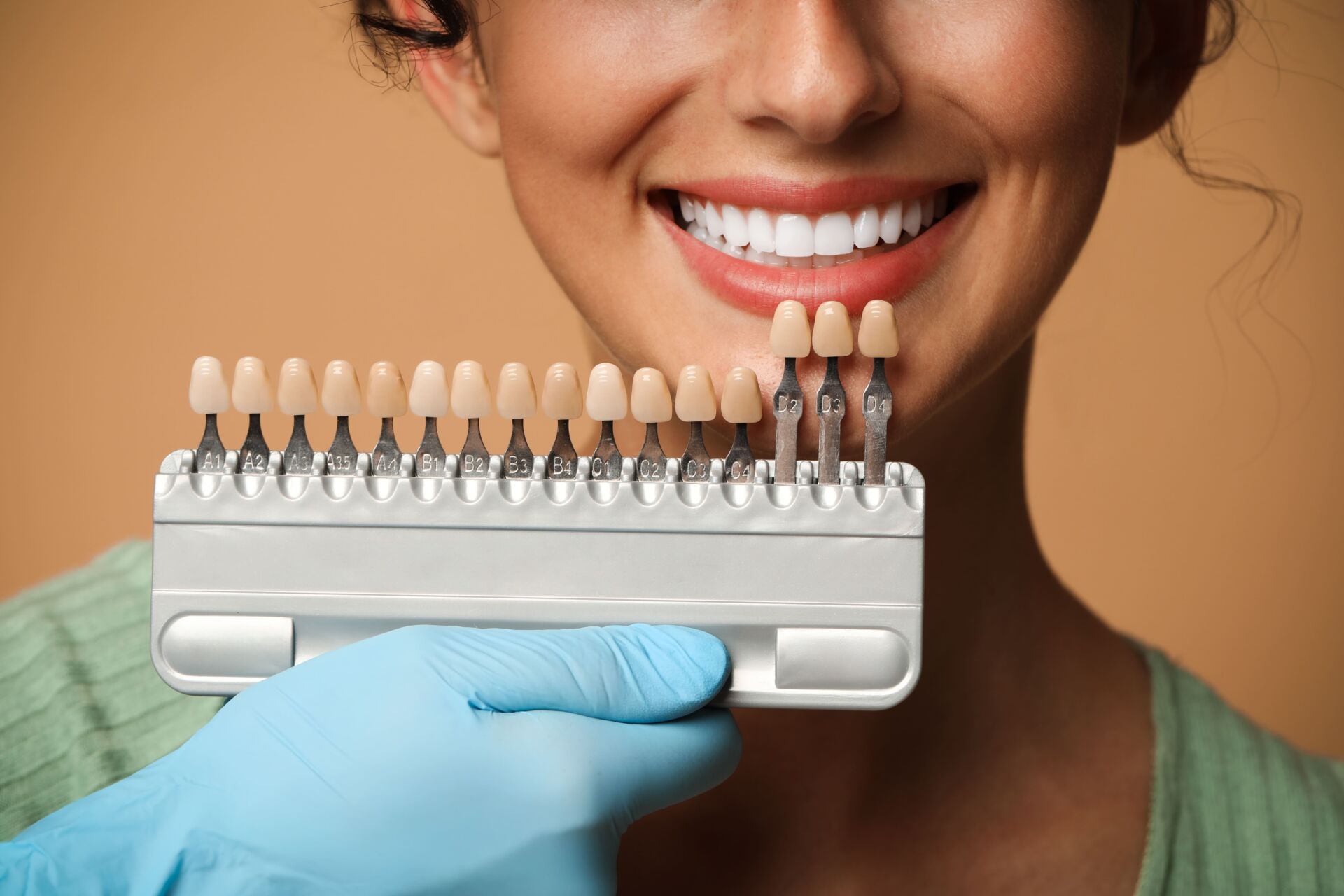Temporomandibular joint (TMJ) disorder is one of the top causes of chronic pain. TMJ disorders can make it difficult to eat and talk, and live your life normally. TMJ and headaches may also be closely related. Many TMJ disorder symptoms mimic other disorders, so it can be easy to mistake a TMJ for a headache.
Treating TMJ like you would a headache can offer temporary relief, but since the root of the issue isn’t being addressed, you’ll likely experience more headaches.
TMJD Symptoms
TMJ disorders can cause dull to significant pain in the jaw joint. Some of the causes can include:
- Injury or Trauma in the joint
- Overuse
- Misalignment in the jaw due to bad bite
- Wear and tear causing arthritis
- Muscle knots
- Pressure from grinding teeth
These causes create inflammation in the joint, making it difficult to eat or chew due to pain and limited movement.
TMJ and Headaches
Jaw pain caused by TMJ can be mistaken for a tension headache or migraine. In a recent study, it was found that 31% of headache sufferers had TMJ. Because the joint shares a direct connection with your head muscles, it can become tense, damaged, or knotted, creating headaches.
Bite malocclusion, or bad bite, can also lead to TMJ-related headaches. Misaligned teeth, causing a bad bite, cause more jaw stress, making the joints misaligned. Extra stress and pressure in your jaw can put tension on the muscles, causing a headache.
Migraines
Unlike regular headaches, migraines are a neurological phenomenon and can often be challenging to treat with over-the-counter or traditional prescription painkillers. As a result, many migraine-specific prescription medications have debuted on the market, some more effective than others, depending on the patient. Effective treatments for migraine headaches depend on the individual migraine sufferer, but so too do migraine triggers.
For some, it’s alcohol, for others it can be anything from bright lights to stress or even other medications. According to a new study, migraines and MTJD may be closely related. The study was conducted at the University of São Paulo in Brazil and found that though TMJD itself cannot trigger a migraine, having a migraine with TMJ dysfunction could make your migraine symptoms much worse.
So, what’s the cause behind this new revelation? Researchers aren’t 100 percent sure, but there are some theories. First, the pain of having a migraine could be a trigger for TMJ dysfunction. If you are experiencing pain anywhere in the body, but especially in the head, you could be more likely to grind your teeth or clench your jaw, which would exacerbate migraine pain.
Another theory? Cortisol. Cortisol is a hormone that the body releases during times of high stress. Stress is also a well-known trigger of both migraine headaches and temporomandibular joint dysfunction, again due to jaw clenching and teeth grinding. When cortisol is released in the body, it acts as an inflammatory, causing the joints to swell, including the temporomandibular joint, which, if already affected by TMJD, could feel much worse.
The Difference Between TMJ and Headaches
There are a few ways to differentiate between a headache and TMJ pain. TMJ pain mistaken as a migraine won’t have typical migraine symptoms like sensitivity to light and sound or nausea. Unique TMJ symptoms include:
- Difficulty or pain while chewing
- Popping or clicking when opening your mouth
- Earaches
- Locked jaw
- Tenderness in your temporomandibular joint
If you’re experiencing locked jaw or consistent chronic pain, it’s time to seek TMJ treatment options to improve your quality of life.
TMJ Treatment Options
Dr. Alexandra S. George offers a few treatment options for TMJD pain. Depending on the cause and severity of your symptoms, one or more of the following options may be beneficial for you:
- Disclusion Time Reduction (DTR)
- Orthotic appliance
- Crowns
- Braces
Disclusion Time Reduction
DTR Therapy is a specialized and innovative dental treatment that can help reduce oral pain and discomfort. We recommend DTR for TMJ disorders because it helps to relieve headaches, facial and jaw pain, locked jaw, and more. Dr. Alexandra George is one of the few doctors in the world who offer this specialized treatment.
Using the latest technology, DTR identifies where the friction and stress are occurring in the muscle, causing pain. We can use this information to adjust your bite without using appliances, medication, or invasive procedures like injections or surgery. In 1-3 appointments, DTR can help relieve pain and discomfort.
Orthotic Appliance
An orthotic appliance is a semi-permanent solution for your jaw discomfort. The appliance is designed to move the jaw into alignment to reduce TMJD symptoms and is removable, but is to be worn 24 hours a day.
Crowns
Crowns are part of many treatment plans, but they can help reduce TMJ disorder pain by restoring your teeth to a pain-free position. If you grind your teeth or have lost tooth structure, crowns may help relieve your pain while restoring your smile.
Braces
Braces aren’t a traditional solution for TMJ disorders, but our braces treatment plan aims to realign the teeth and remodel your jaw to a permanent and more comfortable position.
The Three Main TMJ Complaints are Headache, Neck Pain, and Jaw Pain
A few days ago, one of our patients, Dorothy, came in complaining of TMJ symptoms. She was in the office because she was having headaches, neck, and jaw pain. Dorothy is not our typical TMJ pain patient. Yes, she has three of the main complaints I hear: headaches, neck pain, and jaw pain. However, she is 85 years old.
We immediately took a strong liking to Dorothy and her husband, Richard. Their personalities and humor are very uplifting. They have been married for 64 years. We’ve never had a patient in so much pain be so happy! She had been suffering from headaches every day for many years. Richard saw our commercial on TV and said to his wife, “You are going to see Dr. George, or we are going to get a divorce.”
Needless to say, we saw her as a challenge just because she has been suffering so long, and wanted to break the pain cycle. During her TMJ exam, Richard told us that they ordered the “My Pillow” for her neck pain and sent it back for the money-back guarantee because it didn’t work. I laughed because being an infomercial sucker myself, I ordered the same pillow and realized it didn’t work. Kindred spirits we are!
As we age, things change in our mouths. We may lose and break some teeth. Through the years, we replace them with crowns or bridges. Every time a change is made in your mouth, your jaw balance may be thrown slightly off. Over time, it may start to cause TMJ symptoms.
Treatment with Dorothy began, and within three weeks, her headaches and pain were gone. Even her neck pain has disappeared. She can chew her food better and sleep better, too. The moral here is that it is never too late to get help and live your life pain-free.
Book Your Consultation Today
We offer a variety of approaches to finding a treatment plan that works best for you and your TMJ disorder pain. Your jaw is an integral part of your daily life, and we don’t always realize how much we use it until it’s in consistent pain. When your TMJ becomes disruptive to your ability to sleep, eat, speak, and function, you deserve relief. Learn more about our TMJD treatments for headaches and book your consultation today.




